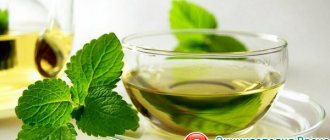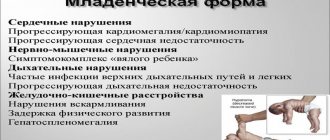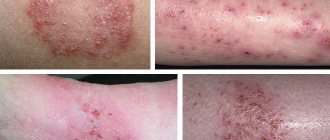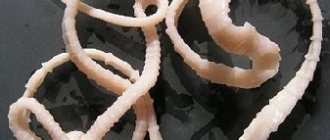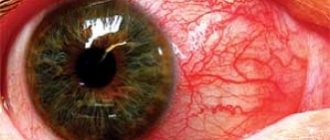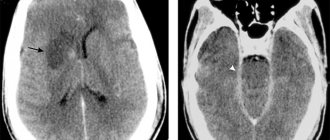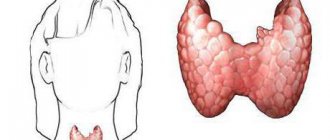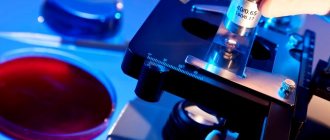Causes of cheilitis
The mucous membrane of the lips is very delicate and very vulnerable, therefore it is easily exposed to the harmful effects of external and internal environmental factors.
Causal factors contributing to the occurrence of inflammation on the lips:
- The environment is merciless to the easily vulnerable mucous membrane, so temperature changes inevitably lead to excessive drying (chapping) of the lips. As a result, the lip mucosa responds with inflammation.
- Regular lipstick can be the main cause of the development of the pathological process. Lanolin, which is part of the cosmetic product, clogs pores, thereby causing inflammation.
- Allergic conditions and dermatoses (psoriasis, lichen) naturally involve the lip mucosa in the process.
- Endocrine diseases (diabetes mellitus) and immunodeficiency states.
- Diseases of the gastrointestinal tract (gastritis, reflux - esophagitis).
- Hypovitaminosis and imbalance of macro-microelements in the body.
- Chemotherapy for malignant neoplasms and blood diseases.
Symptoms of acute and chronic cheilitis imply the presence of the following symptoms:
- dryness, burning and peeling of the mucous membranes of the lips;
- the presence of painful blisters, ulcerations and cracks in the mucosa;
- seizures of varying severity;
- hyperemia, swelling and cracking of the red border of the lips;
- formation of hard-to-remove crusts.
If the disease is systemic, plaques of various sizes with purulent discharge may appear, causing constant pain to the patient.
Traditional methods of therapy
Diseases of the lips of the mouth can be eliminated through the use of a wide range of traditional medicine methods:
- Tea tree oil is a natural antiseptic. Application makes it possible to accelerate the healing of wounds on the surface of the skin of the lips. The product must be used topically several times a day.
- Soda solution is an excellent remedy for treating infectious manifestations on the lips. A teaspoon of powder is dissolved in a glass of boiled water. Liquid from an ampoule containing vitamins B2 and B12 is added to the composition. The solution is used to treat damaged areas of the skin several times a day.
- Decoctions based on oak bark, chamomile, sage, calendula - these plants contain substances that have an anti-inflammatory and antiseptic effect on the body. Damaged areas of the skin of the lips are periodically washed with products prepared using such herbs, which promotes their speedy healing.
- A mixture of aloe juice, carrots, lemon and olive oil - the product is rich in vitamins and has an antiseptic and anti-inflammatory effect. Excellent help when jams appear.
- Plantain leaves - the juice of the plant contains natural antiseptics, which heal various types of damage to the skin of the lips within a short time. For treatment, it is necessary to grind the leaves of such a herb and lubricate the problem areas with the resulting liquid several times a day.
- Beeswax - has a softening effect on the skin of the lips, protects the delicate epidermis from the negative effects of environmental factors.
Angular cheilitis
Angular cheilitis involves skin lesions in the corners of the mouth. In most cases, inflammation is supported by fungi of the genus Candida or streptococci.
Causes of the disease:
- bad habits in the form of frequent licking or biting of lips, with gripping the skin around the mouth;
- finger sucking (mainly in children) or nail biting as risk factors for infection;
- improperly formed bite;
- dry mouth due to somatic diseases (ARVI, acute respiratory infections and others);
- acute and chronic infections in the oral cavity;
- general vitamin deficiency of the body;
- therapy with antibacterial agents (inhibition of beneficial microflora);
- eating foods that corrode mucous membranes (acidic juices and fruit drinks, kiwi, tomatoes).
At the initial stage of the pathological process, the corners are barely inflamed, so they practically do not cause concern. But when you open your mouth while talking or eating, the tight mucous membrane cracks.
Diagnosis of the disease involves determining the nature of the disease based on a thorough examination of the area of the affected mucosa. For reliability, diagnostic tests are carried out to detect the causative agent of the disease (bacteria or fungi).
Therapy
Depending on the cause of the disease, Fusiderm (an antimicrobial ointment) or Candida (an antifungal agent) is prescribed.
Lip diseases: types, causes, symptoms and treatment features:
The main sign of the development of such a lip disease is the appearance of small ulcers in the represented area, which are formed as a result of increased secretion of the sebaceous glands. Doctors call such manifestations seborrheic cysts. Often the ulcers spread to other parts of the body.
How is Fordyce disease treated? Therapy involves, first of all, the use of ointments containing retinol. Obsolete ulcers are removed using a laser, as well as by electrocoagulation. As practice shows, these solutions do not guarantee absolute recovery. This insidious disease is characterized by relapses, which are observed in the most numerous cases.
Lips crack until they bleed - what to do?
All of the above reasons provoke the appearance of a feeling of dryness and tightness of the skin on the lips, peeling, the formation of cracks, ulcers, and sticking. Skin lesions can cause discomfort, pain, itching, and bleeding. The possibility of the appearance of foci of suppuration cannot be excluded. All this can interfere with eating and even talking.
Having found out the cause of the pathology, it will be possible to decide on treatment. It is not always possible to do this on your own. In this case, you should not refuse the help of doctors. After all, without this, at home, attempts are made mainly to eliminate symptoms. But this is how they will appear again and again. The situation can become chronic. Complications are also possible.
One of the reasons for the appearance of bleeding, poorly healing cracks may be a lack of vitamins. So, lack of vit. B is expressed in dull hair, weakening, tendency to fall out, dry skin, brittle nails.
Vitamin deficiency C leads to a weakening of general immunity. Lack of vitamin intake by the body. And causes a weakening of the regenerative properties of the skin. To get rid of all these troubles, you need to rely on fresh fruits and vegetables or take vitamin complexes.
Chronic cracks in the skin of the lips
The essence of the phenomenon is the occurrence of skin damage in the corners of the mouth, along the border of the lips. The root of the problem lies solely in physiological factors.
The cause of this lip disease can be a person’s addiction to smoking, the habit of constantly licking or biting his lips.
Chronic cracks in the skin often appear in those who refuse to use moisturizing lipsticks and balms in windy, frosty weather. Sometimes stress and vitamin deficiencies are to blame.
If the problem is chronic, the lips always look inflamed, reddish and somewhat swollen. Bleeding areas form on the skin. To cope with trouble, a person must monitor his behavior without further injuring his lips. Anti-inflammatory and wound healing agents can be used to eliminate damage to the skin.
Exfoliative cheilitis
Exfoliative cheilitis is characterized by the formation of large scales on the lips and swelling in the corners of the mouth.
There is a dry and exudative form of the inflammatory process.
The dry version of exfoliative cheilitis causes discomfort to the patient, but the exudative version brings suffering (pain) up to the inability to open the mouth and chew food.
Because scientists have not fully studied this variant of the inflammatory process, there is an assumption about its neurogenic nature.
Patients often exhibit mental disorders that manifest themselves in a depressive (depressed) state or an anxious (excited) state.
It has been noted that cheilitis develops more often in patients with a genetic predisposition, as well as with thyroid pathology.
Treatment
The initial stage will be to eliminate the cause of the pathological process. This means that it is mandatory to prescribe tranquilizers (sedatives), antipsychotics or antidepressants.
Local treatment involves the use of hygienic lipsticks to moisturize the mucous membrane. The complex uses ultrasound and radiation therapy. Pyrogenal (acceleration of mucosal regeneration), vitamins C and B (replenishing the deficiency of nutrients), stimulants of general immunity and AHT (autohemotherapy to maintain local immunity) are used as medications.
Symptoms of inflammation
Cheilitis is a set of diseases that appear on the lips. The diseases are inflammatory in nature. All diseases develop differently. This must be taken into account at the time of diagnosis and when selecting a treatment method. But the symptoms of many lip diseases are similar.
These include:
- dryness;
- burning, scabies, peeling skin;
- cracks form in the corners of the mouth;
- diaper rash of the skin near the mouth;
- the appearance of ulcers.
Symptoms depend on the type of disease; there are several of them.
Cheilitis due to general hypovitaminosis (mainly deficiency of B vitamins).
The clinical picture of the disease is manifested by burning and dryness of the mucous membranes, including the surface of the tongue. Visually, you can notice microcracks on the red border of the lips with a tendency to bleed. The tongue, as a rule, is enlarged due to swelling, so “imprints” of teeth can be found on it.
Therapy
First of all, treatment of cheilitis on the lips is aimed at replenishing the lack of nutrients through vitamin and mineral complexes. Anti-inflammatory drugs on an ointment basis are prescribed locally (externally).
Atopic cheilitis
Atopic cheilitis is a mild inflammatory process characterized by hyperemia, peeling of the red border of the lips and constant itching (burning).
A distinctive feature of this type of pathology is pronounced damage to the corners of the mouth and, as a result, increased dryness of the skin of the face.
Causes of pathological inflammation:
- intense allergic status (food, household and drug allergies);
- atopic dermatitis or neurodermatitis;
- genetic predisposition.
Treatment
Patients are prescribed a long course of treatment with long-acting antihistamines (Erius, Claritin). If anti-allergy medications are ineffective, they resort to using “powerful” hormonal drugs (corticosteroids) for a short period of time.
Ointments (flucinar, lorinden) are prescribed as local therapy.
A prerequisite for the treatment process is strict adherence to the diet, with the exclusion from the diet of foods that can trigger an allergic reaction (citrus fruits, chocolate, berries). It is worth limiting the need for salty, spicy, sweet (carbohydrate) and sour foods.
Treatment
The pathology requires complex treatment, consisting of: antihistamines, corticosteroids and tranquilizers. To boost the immune system, vitamin therapy is required. The following beneficial substances are used: B6 and B12 (intramuscular injection), B1, C, PP.
Vitamins are required to reduce the risk of relapse. The patient will need to drink them even during periods of remission. You can take vitamin complexes on your own (Aevit, Complivit, Alphabet). It is advisable to use medications containing minerals.
Antihistamines are anti-allergenic drugs that block the production of histamine (tissue hormone). Corticosteroids are immunomodulatory drugs that can stop the inflammatory process.
The main medications used for therapy:
- Chloropyramine. An antihistamine, available in tablet form. Recommended dose: 25 mg 4 times a day. For intravenous administration, the dosage is 30-40 mg at a time. Cost of the drug: about 150 rubles;
- Loratadine. Antihistamine tablets are prohibited for use by pregnant and lactating women. Dosage: 10 mg per day. Possible side effects from the central nervous system: drowsiness, irritability, increased fatigue. Cost of the product: about 200 rubles;
- Prednisolone. Corticosteroid is available in several forms (tablets, ampoules, ointment). Contains the active substance prednisolone. Contraindicated in systemic fungal infections. Daily dose: 1-2 tablets. Price of the drug: about 250 rubles (depending on the form of release).
For therapy, sodium thiosulfate is administered intravenously. Treatment should be carried out under the supervision of a physician. All drugs are selected individually. The medications have a number of contraindications; they are not suitable for therapy for pregnant and lactating women. The course of treatment averages from 15 to 30 days.
A prerequisite is compliance with the diet. The patient should not drink alcohol or smoke cigarettes. It is recommended to adhere to a healthy diet: eat fruits and vegetables, cereals, lean soups, lean meat, nuts.
The main emphasis is on restoring normal functioning of the immune system. The patient must completely protect himself from stress and anxiety. Physical activity should also be reduced to a minimum.
Glandular cheilitis
Glandular cheilitis is characterized by severe dryness and peeling of the mucous membrane. As a result, wounds and cracks form, as well as cystic formations in the glandular tissue of the lips. The main cause of the pathological process is a congenital anomaly of the labial glands (hyperplasia, heterotopia) or an acquired defect as a consequence of constant trauma to the mucous membrane (lupus erythematosus, leukoplakia, lichen planus).
Visually, you can detect drooling, in which the lower lip becomes excessively moist and then sharply dry. As a result of the contrasting change in the humidity of the mucous membrane, it cracks with the formation of erosions and ulcers.
As a rule, uncontrolled salivation creates favorable conditions for the introduction of pathogenic flora. Suppuration of the salivary glands is difficult to treat, therefore there is always a risk of degeneration of the focus of inflammation into a precancerous form of the disease.
Therapy
In the case of a hereditary disease, ointments with an anti-inflammatory effect containing hormones (hydrocortisone, prednisolone) are used for therapy.
Acquired pathology is treated in combination with the underlying somatic disease.
Actinic cheilitis
Actinic cheilitis involves exposure of the lip mucosa to ultraviolet radiation (UVR). As a rule, this kind of inflammation occurs on the lips after prolonged exposure to the sun. In this case, the mucous membrane dries out under the influence of high temperatures, mainly on the lower lip. The presence of erosions and crusts is visually noted. In most cases, patients complain of a painful burning sensation and unpleasant itching in the lip area.
In a neglected state, the lips lose moisture so much that difficult-to-heal cracks (open wounds) appear, which can develop into an ulcerative process. And this is already a risk of developing benign or, in the worst case, malignant neoplasms.
Treatment of UV-dependent cheilitis
Therapy is primarily aimed at eliminating the inflammatory focus. For this purpose, ointments (afloderm, sinoderm, argosulfan) are used to prevent further spread of the pathological process. Vitamins are used as protection against aggressive environmental factors.
For the purpose of prevention, hygienic lipsticks (lip balms) with a high level of ultraviolet protection are prescribed.
Diseases of the lips: photos, classification of diseases, signs, treatment
Diseases of the lips manifest themselves externally; they can be considered a defect in appearance. Treatment requires an understanding of the causes and provoking factors. Prevention is the sanitation of the oral cavity, compliance with the rules of personal hygiene.
Classification
Lip disease according to ICD No. 10 has code K13. The classifier considers diseases of the oral cavity and jaw. This item is included in the section on digestive diseases and dentistry. Main diseases that are considered:
- Cheilitis are their varieties. Only those arising after radiation exposure, allergic, granulomatous, lymphoedema are excluded. Their etiological course and clinical manifestations are characteristic of other nosological groups. For example, exfoliative cheilitis combines meteorological and actinic.
- Chronic cracks.
- Jams. The exception is seizures during other diseases (candidiasis, riboflavin hypovitaminosis).
- Abscesses, cellulites, fistulas and their hypertrophy. The exceptions are congenital fistulas and congenital hypertrophy.
Oral diseases included in code K13:
- biting cheeks and lips;
- leukoplakia – idiopathic, hairy, nicotine, erythroplakia, aikeedema;
- granuloma - pyogenic, eosinophilic, verrucous xanthoma, as well as specified and unspecified types;
- hyperplasia of the oral cavity, its mucous membrane and other unspecified lesions.
The classification combines diseases that may be signs of other diseases and pathologies that independently developed against the background of external factors.
Blue lips are a sign of what disease?
The blood filling of the vessels gives the lips a red color. The disease can manifest as blue discoloration when the blood vessels that fill them narrow. The causes of blueness depend on external and internal factors. External factors include:
- hypothermia;
- physical exercise;
- mechanical impact - shock, injury;
- When crying in young children, acrocyanosis (blue discoloration of the nasolabial triangle) may occur.
Internal factors include:
- violation of the integrity or patency of the airways due to poor sputum discharge or foreign body entry;
- changes in blood gas composition when normal atmospheric pressure changes (altitude, decompression sickness);
- smoking changes oxygen supply to tissues;
- anemia causes blue lips when its moderate or severe form develops;
- with an unsatisfied sucking reflex in children under one year of age, which they satisfy by sucking the lower lip;
- weak blood vessels burst under overexertion or stress;
- disruption of the cardiac or pulmonary systems causes blueness in the corners of the lips.
Emergency conditions in children and adults lead to blue discoloration of the nasolabial triangle. Such conditions include croup and drowning.
Treatment of blueness should begin after examination - a general blood test, ECG, and other symptomatic diagnostic studies.
Development of cheilitis
Cheilitis is an inflammatory disease. The etiology of development has many factors. The advanced form runs the risk of developing oral infections. Age is one of the factors predicting complications of the disease.
At a young age, the prognosis is favorable, but at a more mature age, when the body is in a period of changes, the prognosis is unfavorable - leukoplakia, malignant neoplasms. Many forms of cheilitis have common symptoms.
These include:
- swelling;
- dryness that causes cracks;
- peeling, burning, itching;
- scales form on the red border; their color can range from gray to yellow-brown;
- crusts, blisters, plaques and purulent discharge from cracks.
All forms of cheilitis are based on a hereditary predisposition and a decrease in the body’s immune defense. Reasons for development:
- infections caused by bacteria or viruses (tuberculosis, syphilis, lichen);
- skin diseases (dermatitis, psoriasis);
- inflammatory sluggish diseases of the digestive system;
- neoplasms;
- disruption of the endocrine system (lack of hormones, hypothyroidism);
- violation of the integrity of the skin of the lips;
- hypovitaminosis, more often of B vitamins;
- sudden changes in temperature, their prolonged exposure;
- failure to comply with personal hygiene rules;
- applying excessive amounts of cosmetics.
Features of exfoliative cheilitis
Women are more often susceptible to this form. It is chronic and requires therapeutic procedures. Its etiological causes are stress, mental disorders, as well as endocrine and immune diseases, hypovitaminosis. There are two forms:
- Dry. Gray scales appear on the red border, which are easily removed. There is a burning sensation, dryness without the formation of ulcers. This is a severe relapsing form.
- Exudative. Yellow crusts on a red hyperemic border without spreading to the mucous membrane and corners. It most often occurs on the lower lip. Does not cause erosion.
Treatment is based on the mechanism of its occurrence. These can be psychotropic drugs (antidepressants, antipsychotics), hormonal drugs, vitamins, ointments, creams.
Features of actinic cheilitis
Actinic cheilitis is a seasonal allergic inflammatory process. The main reason for its appearance is the change in the level of ultraviolet radiation during the transition seasons of the year (spring, autumn). Localized in the lower part of the mouth. There are two forms:
- Dry. Easily removable gray scales form.
- Exudative. Bubbles appear on the rim, which easily burst to form crusts.
A prolonged course of actinic cheilitis has an unfavorable prognosis – cancer.
Treatment of this form is carried out with anti-inflammatory ointments, creams, vitamin and mineral complexes.
The course of atopic cheilitis
The development of atopic cheilitis manifests itself in childhood and is considered a complication of atopic dermatitis.
Its symptoms are manifested by dry facial skin, mild swelling of the lips, itching, flaking with the formation of scales, and cracks in the corners of the mouth. Treatment is carried out using antihistamines (Claritin, Suprastin), as well as local ointments.
If you are predisposed to the disease, for the purpose of prevention, you need to lubricate them with hygienic lipstick before going outside.
Chronic cracks
The disease develops as a result of hypovitaminosis, bad habits (licking, biting) and metabolic disorders, rare sanitation. The course of the disease is facilitated by disturbed oral microflora or the presence of pathogenic flora. Cracks are observed more often on the lower lip in its central fold; fewer cracks form on the upper and corners of the lips.
The number of cracks is from 2 to 4, their epithelization occurs at night. In the morning, when vigorous activity begins, they burst again and bleed slightly. Treatment of cracks requires the use of a comprehensive course using ointments, external vitamin complexes, and medicinal plant oils.
A complex advanced course involves the use of surgical treatment with excision of a crack within healthy tissue.
Seizures
Seizures, or angulitis, are independent diseases of the mucous membrane. This disease on the lips is of a microbial nature and is called angular cheilitis, angular stomatitis. Etiology of the disease:
- hypovitaminosis, vitamin deficiency;
- diabetes;
- presence of carious teeth;
- pregnancy;
- long-term use of antibiotics;
- irritating foods or drinks.
These provoking factors, the main reason is violation of hygiene rules and irregular sanitation of the oral cavity.
The disease is more severe in children. Preventing the occurrence of jams is to follow the rules of personal hygiene and frequently wash toys. Treatment of angulitis requires the use of ointments.
Types of seizure
Seizures are classified according to form:
- Primary. An independent disease of microbial etiology.
- Secondary. Against the background of the disease.
With the flow:
Microbial etiology:
- streptococcal;
- fungal;
- viral.
Each type of angulitis has its own specific course and treatment.
Treatment stuck
For treatment, a course of antimicrobial drugs is prescribed, disinfectants and vitamin complexes are used. The course of treatment for microbial infection is 5-7 days. Prevention of recurrence is the sanitation of the oral cavity, compliance with personal hygiene rules, and the use of hygienic lipstick in windy weather.
Herpes
The main manifestations of herpes are blisters filled with liquid, often in the corners of the mouth or on the upper lip. The formation of bubbles is preceded by red dots. Caused by herpes simplex virus type 1.
The disease is chronic, the virus persists along the nerve endings. Treatment is a course of treatment using antiviral drugs externally and internally. Skin diseases. Cheilitis - Grandular, Allergic, Meteorological, Actinic. Cracks on the lips.
School of Health. Gubernia TVCracked lip. What could it be? Cheilitis
You may also like
Source: https://zubi.pro/rot/bolezni-gub.html
Meteorological cheilitis
Meteorological cheilitis is directly related to the negative impact of natural factors.
Causes of cheilitis:
- low or too high air temperature;
- sharp fluctuations in air humidity;
- too windy weather;
- accumulation of dust in the air as a risk factor for the development of the disease.
As a rule, the lower lip becomes “tight”, swollen in places and bright red. A significant difference between the lips is visible to the naked eye.
Therapy
For medicinal purposes, ointment-based hormonal preparations (Elocom, Advantan) are used. A complex of vitamins will increase the body's resistance and improve metabolism. To prevent the disease, lip hygiene products (lipsticks, balms) are used.
Recommendations
Treatment of cheilitis at home is strictly contraindicated. Without knowing the true cause of the disease and using medications for other purposes, you can aggravate the situation to undesirable consequences. Making a clinical diagnosis should be entrusted to professionals. It is not difficult for an experienced doctor to diagnose the pathological condition and prescribe the most effective treatment.
When the first signs of cheilitis appear on the lips or in the corners of the lips, you should seek qualified help from a doctor.
FAQ
1. How to treat cheilitis on the lips? 2. What is the prevention of cheilitis? 3. Is it possible to cure inflammation on the lips and in the corners of the lips at home? And what medications should be used? 4. Is cheilitis a contagious disease? 5. After the course of therapy, can the mucous membrane of the lips become inflamed again? 6. Why may inflammation of the lips not be a symptom of cheilitis? 7. Can the mucous membranes of the lips become inflamed due to the use of low-quality lipstick?
You can get comprehensive answers to all the most important questions during an appointment with a qualified specialist.
Chief author and editor-in-chief: Makarskaya S.E., 29 years of experience.
Last revision: 02/14/2017

